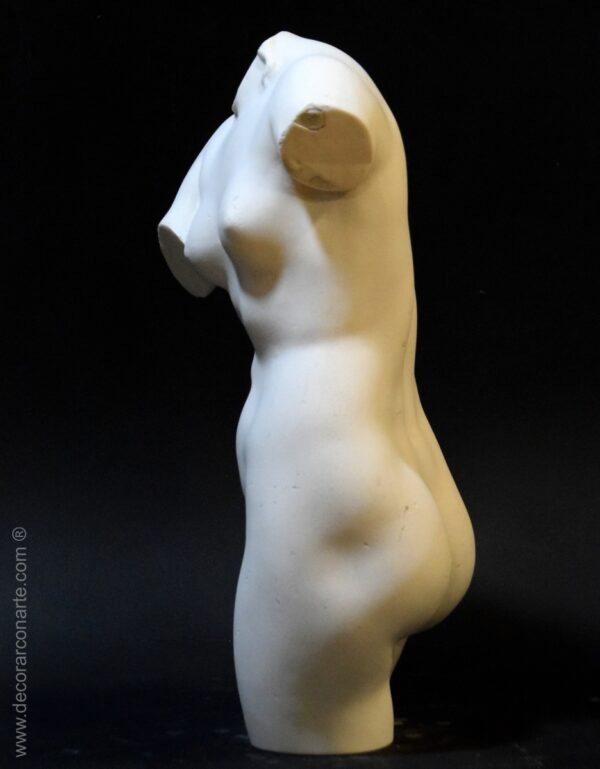Description
Venus torso reproduction, sculpture made of molded marble (marble powder + binder). Finish with aging patinas.
- Measurements: Width 21cm x Depth 18cm x Height 43cm.
- Approx. weight: 13 kg.
Reproduction of a sculpture representing the Greek goddess Aphrodite, Venus for the Romans, attributed to Praxiteles (4th century BC). The original is now in the Uffizi Gallery, Florence.
In classical mythology, Venus, identified in Rome with the Greek goddess Aphrodite, is the goddess of love, beauty, and fertility. The myth tells the birth of Venus from the waters, emerging from the foam generated by the fall into the sea of the genitals of the sky god, Uranus, mutilated by his son Cronus-Saturn. The aquatic origin of the goddess highlights Venus’s connection to water as a symbol of fertility, regeneration, and life. Venus was represented with symbolic attributes such as the rose and the mirror, and animals like the dove or the swan, representing love in all its facets, ranging from universal harmony to human desire and passion, beauty, and seduction.
Venus is attributed with loves with various lovers, both divine and human, from Vulcan, the god of smiths and fire, her legitimate husband, or his brother, Mars, the god of war, to mortals like the beautiful Adonis, for whose death she descended to Hades, or the Trojan prince Anchises, from whom she begot Aeneas, considered by the Romans as their mythical ancestor.
Decorating with sculptures of historical or mythological figures, such as this Venus torso reproduction, brings the cultural and aesthetic richness of classical art to our homes. When we incorporate these sculptures into our homes, both indoors and outdoors, gardens and terraces, we imbue our favorite corners with an air of nobility and serenity.
Art not only serves to bring beauty to our homes but also enriches the soul with its beauty and meaning.
























Reviews
There are no reviews yet.